Estimated reading time: 10 minutes
Do you have a vegetable garden? If you grow fruit, chances are you also grow vegies.
One of the reasons we do what we do—grow organic fruit and teach other people how to do the same—is because we reckon it’s time that we all re-learn how to grow our own food.
It’s a practical solution to so many of the problems that we’re facing. And it seems likely that things will get worse for our kids and grandkids in the future.
Food insecurity, climate change, pandemics…
Oil is going to run out, soil fertility is going down, and food is getting more expensive.
We’re so reliant on global food systems (and factory farming) that we’re very vulnerable to global problems like shortages, transport problems, and disease outbreaks.
Did you know that our supermarkets can run out of food in an emergency in just 3 or 4 days? This used to be a vague “what if” future scenario, but we’ve now seen it in action and now how real it is.
We want our kids (and everyone else’s) to have access to affordable organic food.
So, growing your own vegetables and fruit is the obvious answer.
Growing in community vegetable gardens
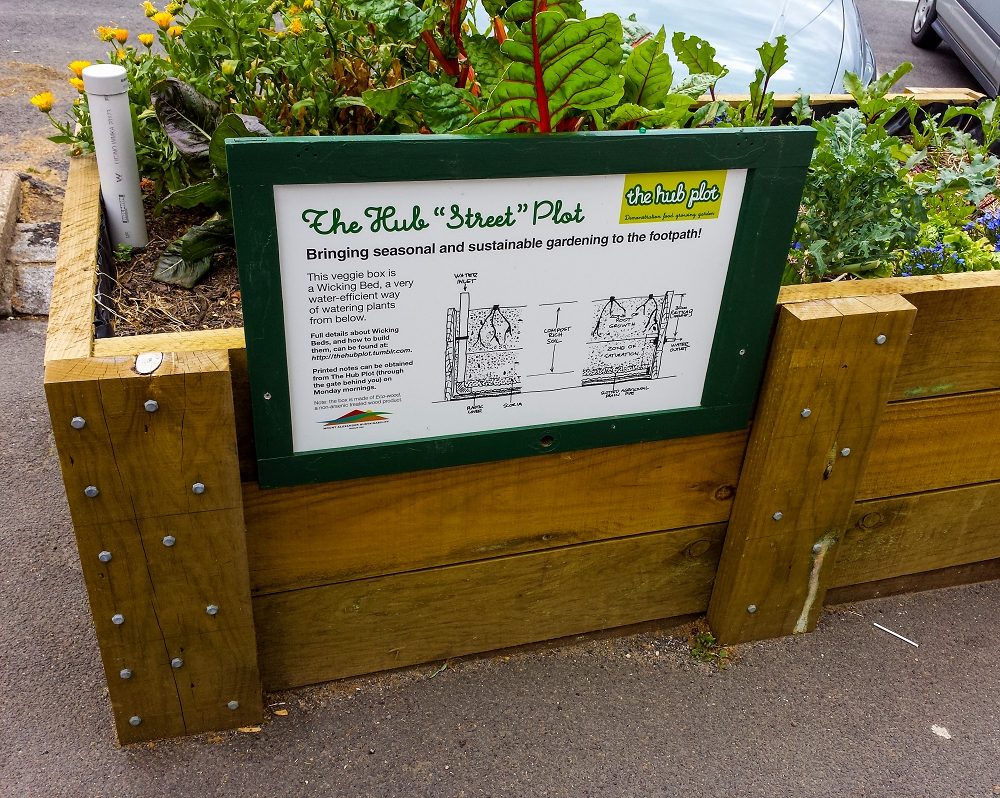
We spend most of our time either growing fruit ourselves or sharing how we do it with home gardeners.
However, though we’ve always had a vegetable garden at home, vegetables are definitely not our area of expertise. So we just love community resources like the ‘Hub Plot’ garden in Castlemaine. It’s a demonstration garden set up to teach people simple techniques for growing their own food in the backyard.
It’s a gorgeous and highly productive garden, full of good ideas and great resources.
Want a virtual tour?
Starting with the basics: garden beds
The Hub Plot garden has lots of different types of garden beds, with a big emphasis on wicking beds.
These are lined garden beds with a refillable reservoir of water underneath the soil. The white pipe you can see sticking up in the photo below is where you put the hose in to refill the bed. (Also note the beautiful cover over this bed.)
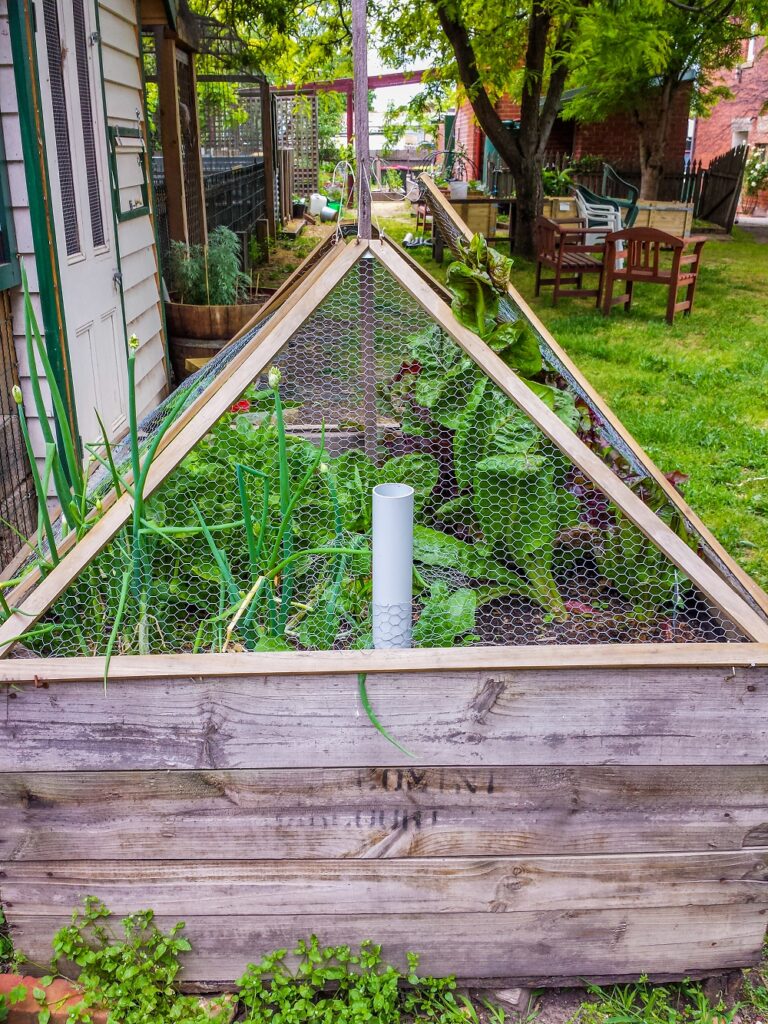
The water ‘wicks’ up into the soil (like wax moving up a candle wick), so the plants get watered from below. This type of bed saves heaps of water, so they’re a great idea for dry climates.
Here’s a mini version:
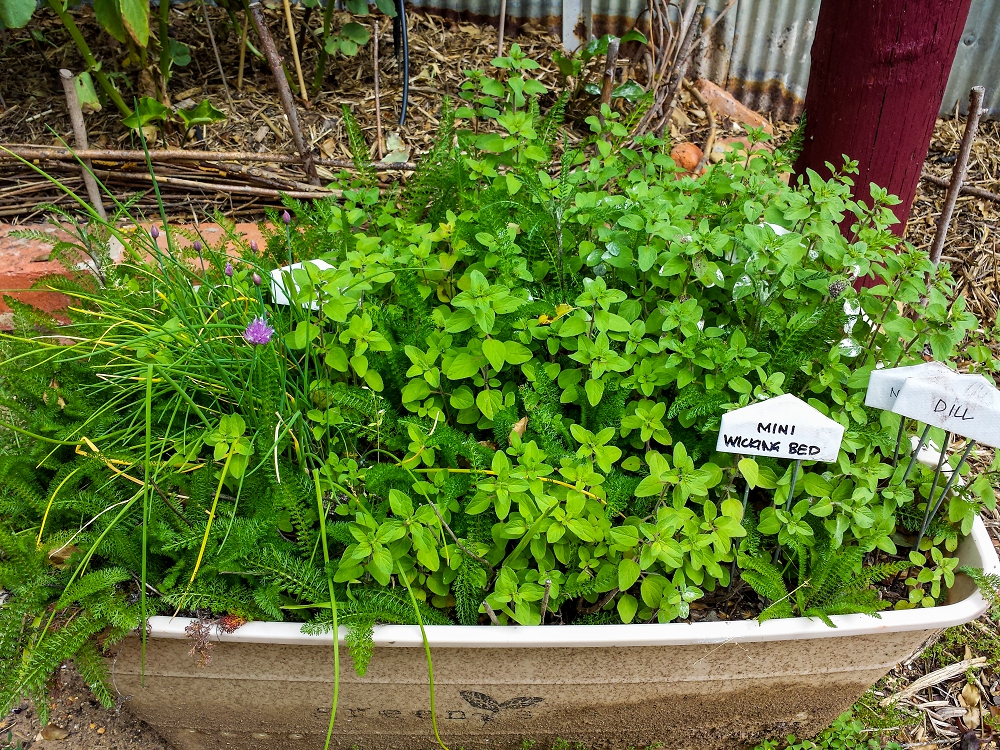
Wicking beds are slightly more complicated to set up than ordinary garden beds. But in certain circumstances (for example when water is scarce, or when you want to grow vegetables under a tree) they’re worth the extra effort.
Here are the instructions for how a wicking bed is made. If you click on the photo you’ll get an enlarged copy.
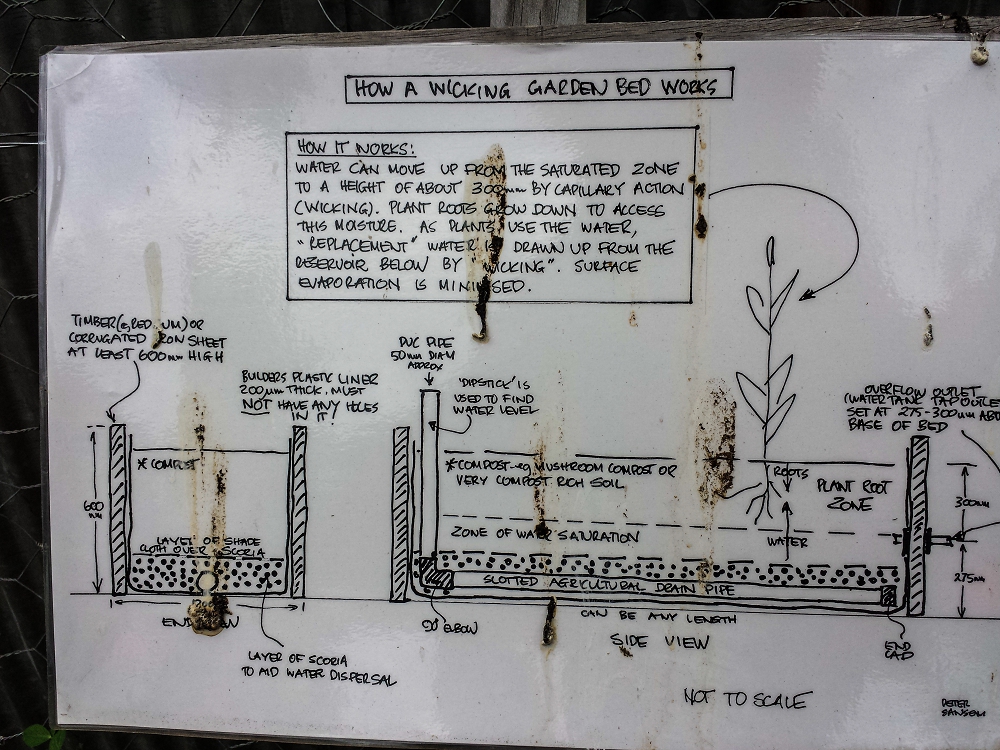
Wicking beds can be made in a variety of containers, and the Hub Plot garden has some great examples. Check out these in a corrugated iron bed in the background, and a converted wine barrel in front.
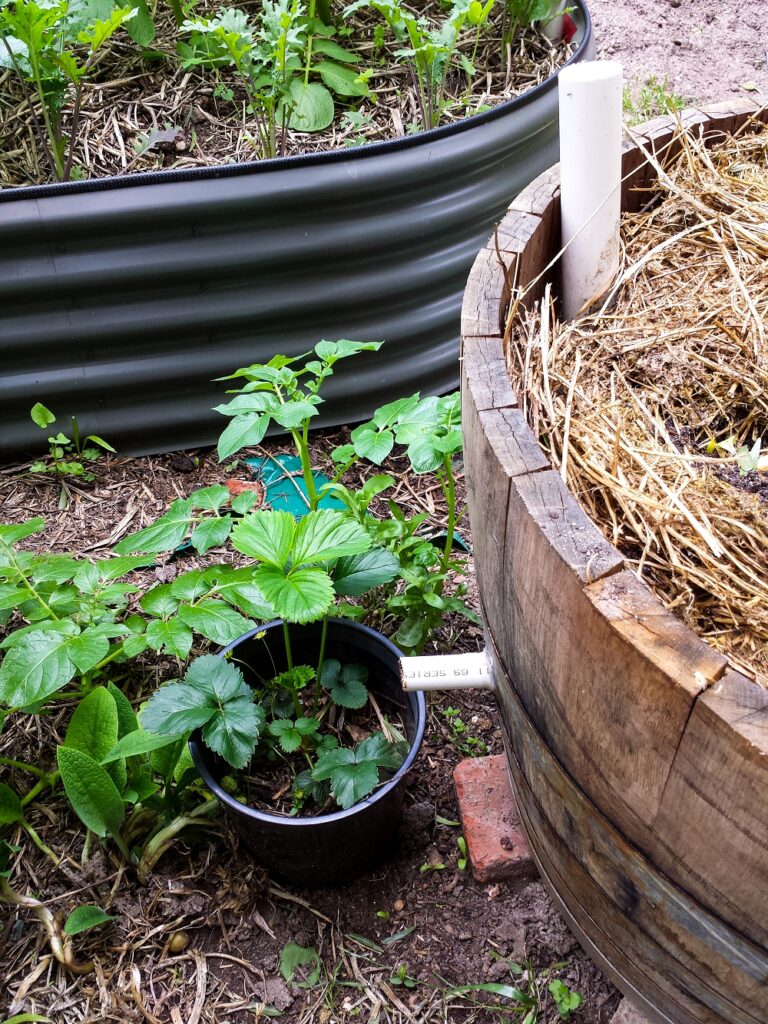
Here’s the wine barrel from above, with a healthy citrus tree. We’ve had a similar wicking bed for years in our garden with a lime tree, in a sheltered spot, and it absolutely thrives with very minimal attention from us!
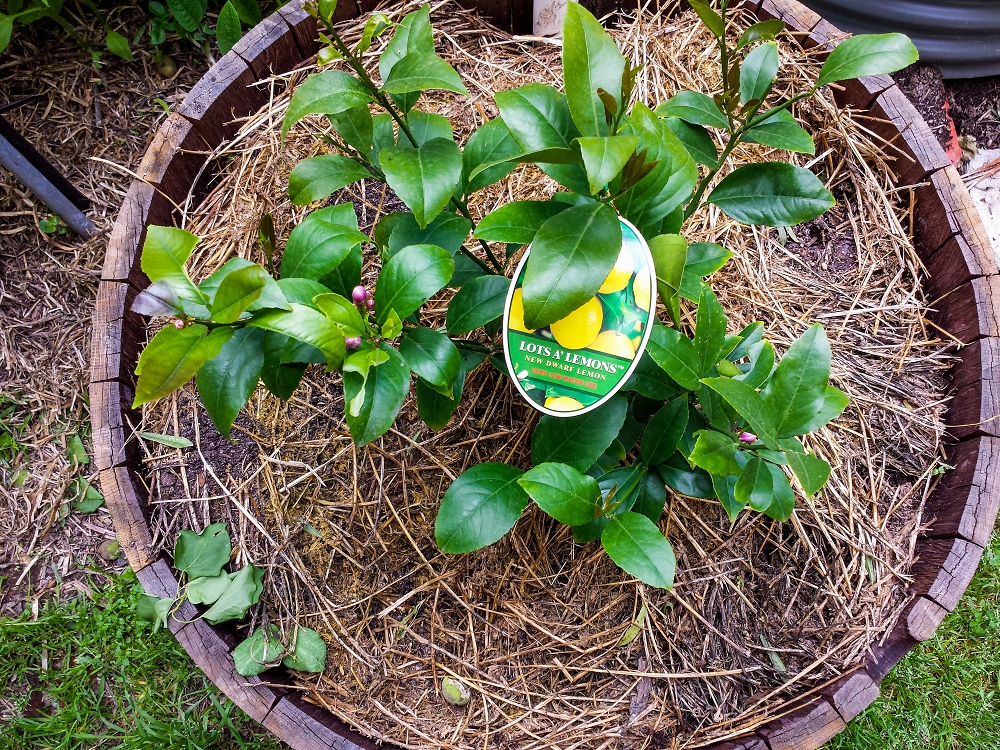
Great composting ideas for vegetable gardens
One of the most important parts of any garden is the compost. That’s where a lot of the natural fertility comes from, and it’s also the easiest way to recycle all your garden waste (it’s so crazy taking garden waste to the tip).
The Hub Plot has a few different systems on display, including a ‘bay’ system. It has pipes inserted into one of the bays to make sure plenty of air can get in to stop it from turning into a sludgy mess.
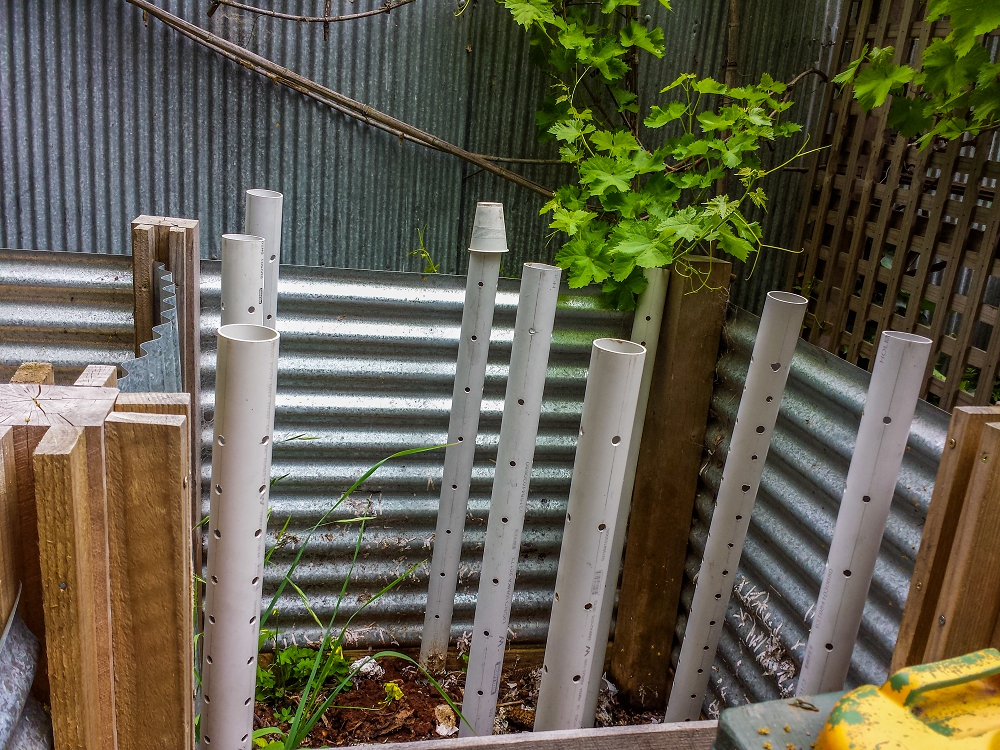
Worms are (in effect) another type of composting system.
We love this innovative idea of using a simple plastic perforated basket that you’d pick up anywhere for a couple of dollars. Bury the basket in your veggie bed so the top is just above the soil level. Pop some food scraps inside and voila! An instant on-the-spot fertiliser factory. Brilliant!
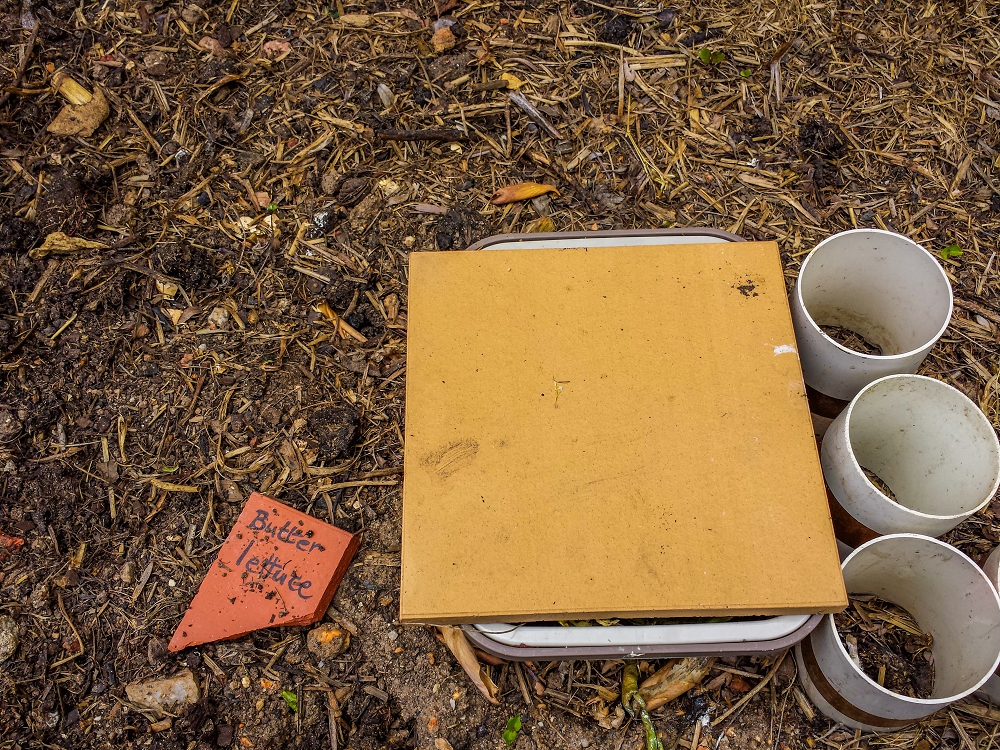
A peek inside the worm basket shows some half-eaten food scraps. There are also loads of worms, munching their way through the scraps (you can see the worms if you enlarge the photo).

The holes in the side of the basket let the worms come and go into the soil. They visit the basket for lunch, then go back to the veggie bed and distribute the goodies!
The beauty of worm farms is they can be whatever size you like, from this tiny basket up to a bathtub, or even bigger.
On the farm, we use an old bathtub, because we generate lots of organic waste. The worm castings are used to make compost tea.
Other garden helpers
Another great way to convert waste to productivity is to have a few chooks. We particularly love the ‘Chook Mahal’ at the Hub Plot garden.
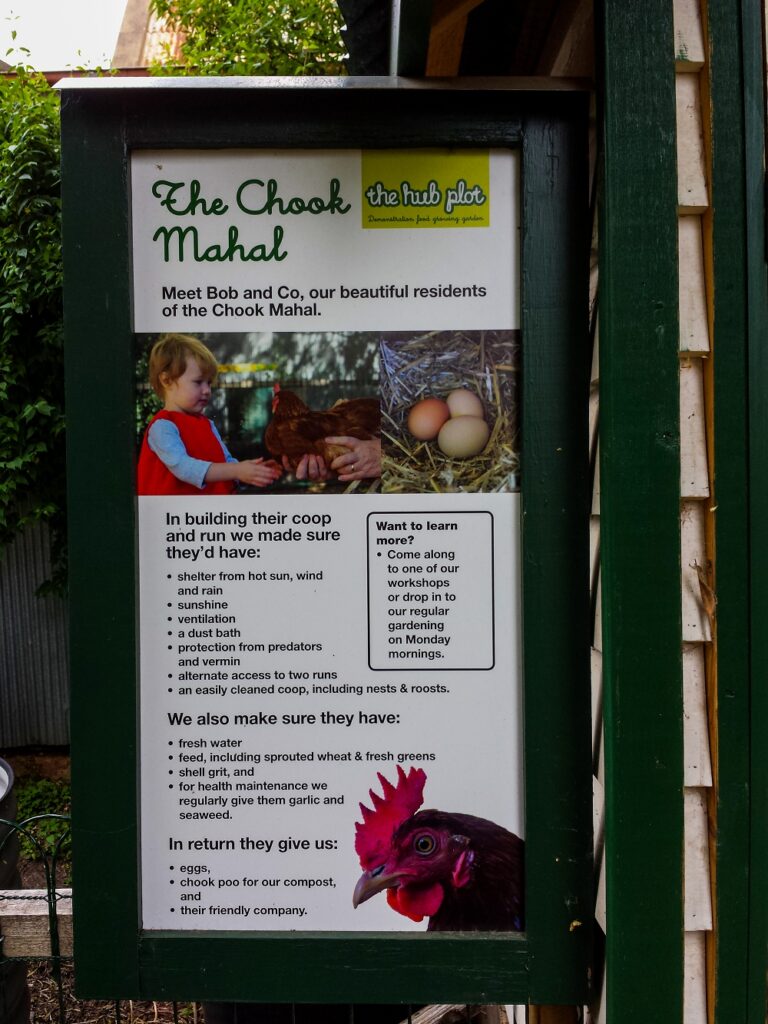
The laying boxes in the chook mahal have an externally opening door. This is a brilliant idea that lets you collect the eggs without having to go into the chook shed.
The golf ball is a pretty cute idea too, just to remind the girls of where to do their business!
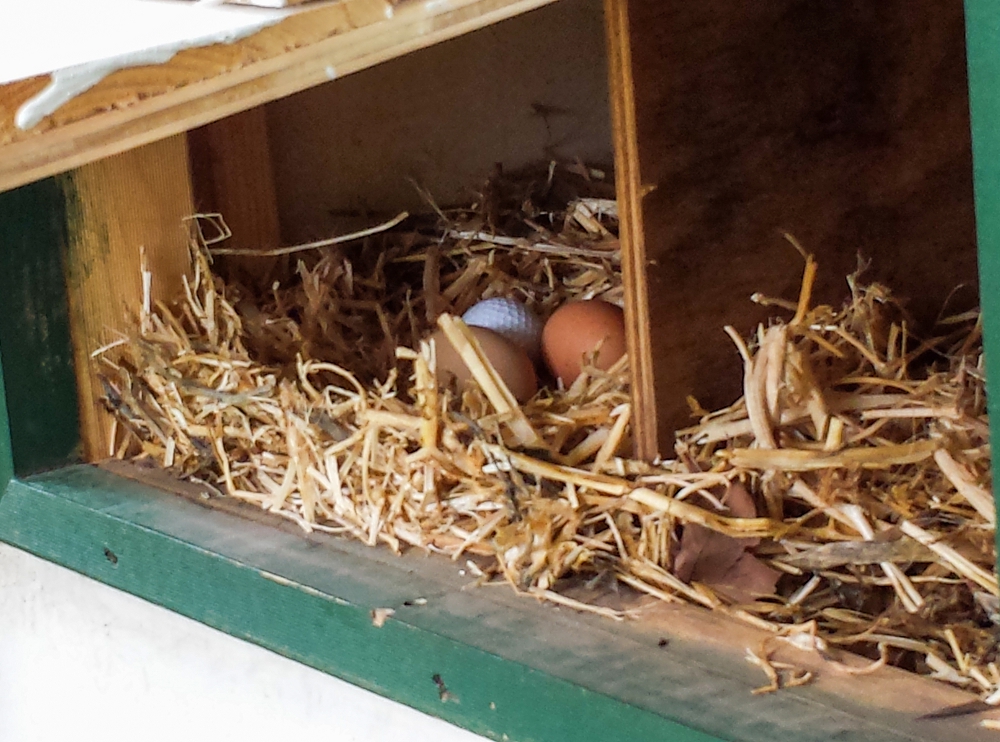
The chooks do a brilliant job of converting food scraps and garden waste into eggs. They also produce manure which gets added to the compost system.
This way, all the nutrients stay within the garden and get re-cycled, over and over again. The chickens look extremely healthy and happy with themselves.
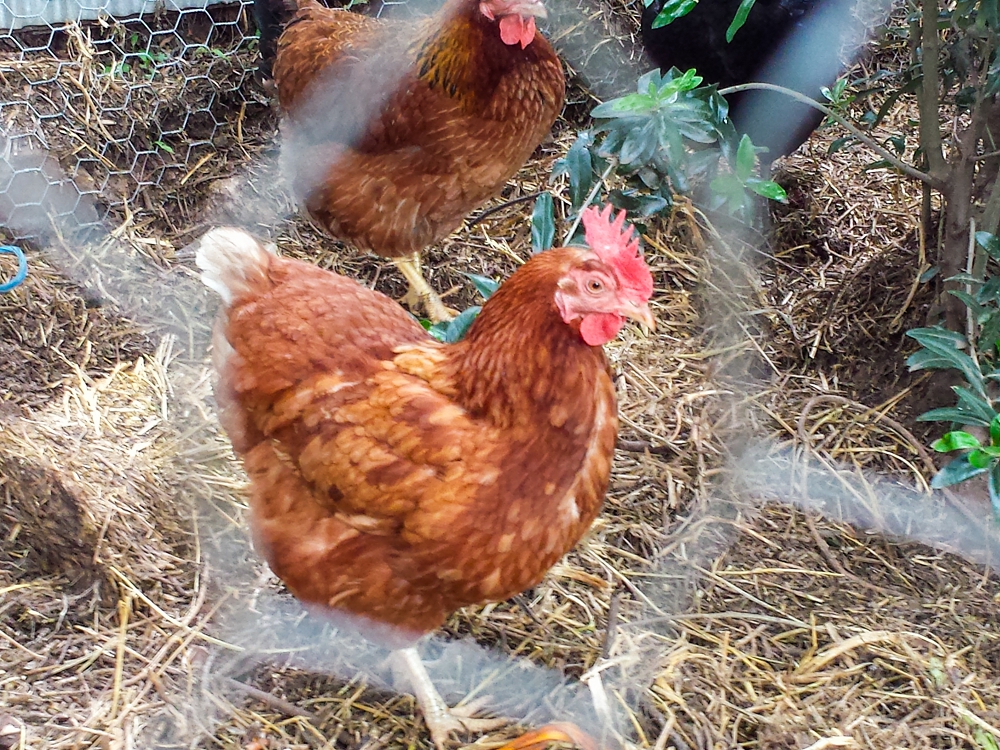
One of the very useful things in the Hub Plot community garden is instructions on how to build a greenhouse.
A greenhouse is a great addition to any garden because it creates a special microclimate that increases the growing season and the types of plants you can grow.
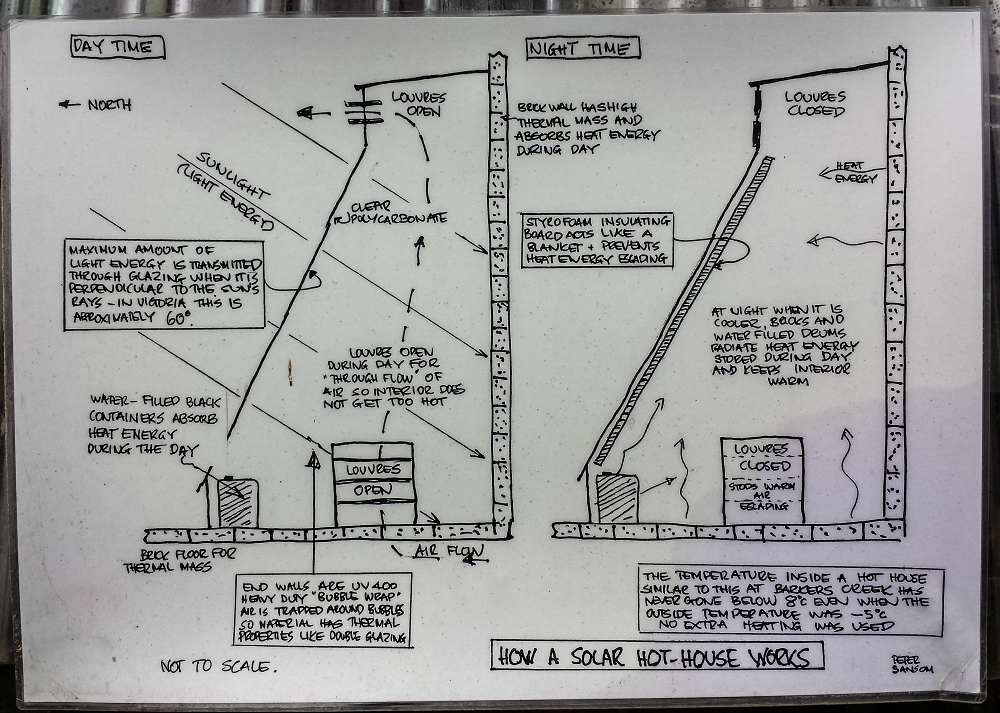
Space-saving ideas for your vegetable garden
The Hub Plot garden fits a huge amount of productivity into a small space. It includes a couple of great ideas that can work for people with extremely small gardens, or even courtyards.
This herb spiral is an example of vertical gardening, and also rather beautiful, don’t you think?
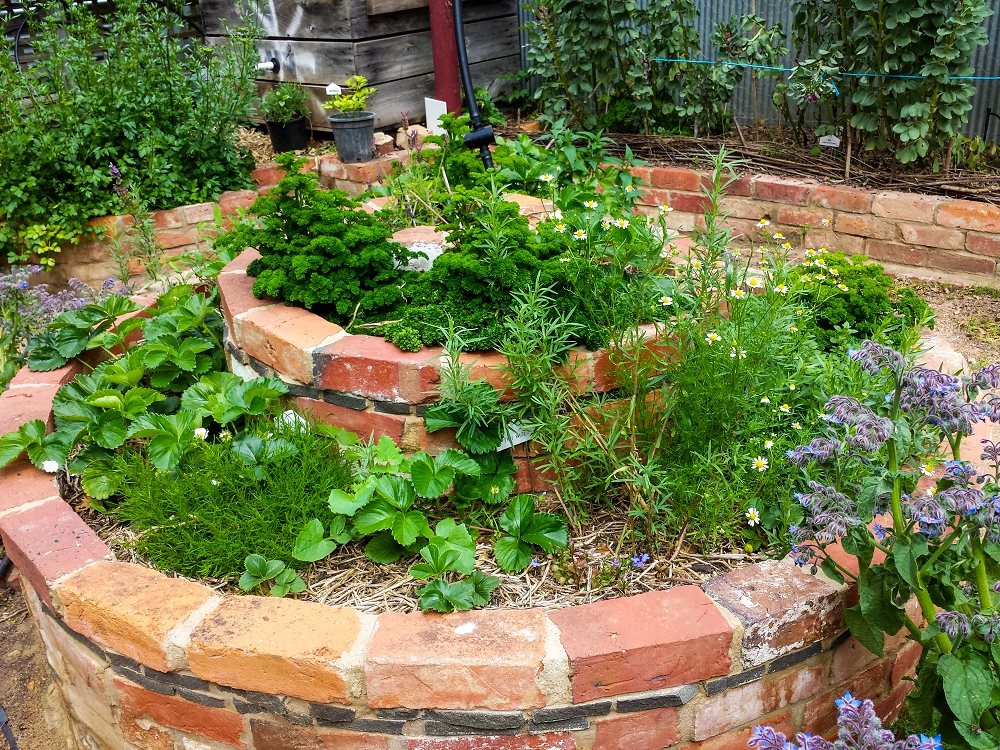
The Hub Plot garden also includes a number of fruit trees. Because the space is only as big as a standard backyard, they’ve had to be very mindful of the 10 steps to ultimate fruit tree care.
In particular, they’ve looked for ways to include the fruit trees without taking up a lot of space.
In some cases that means choosing dwarf rootstocks, and they’ve also pruned the trees to make the most of horizontal space, like this espaliered plum tree.
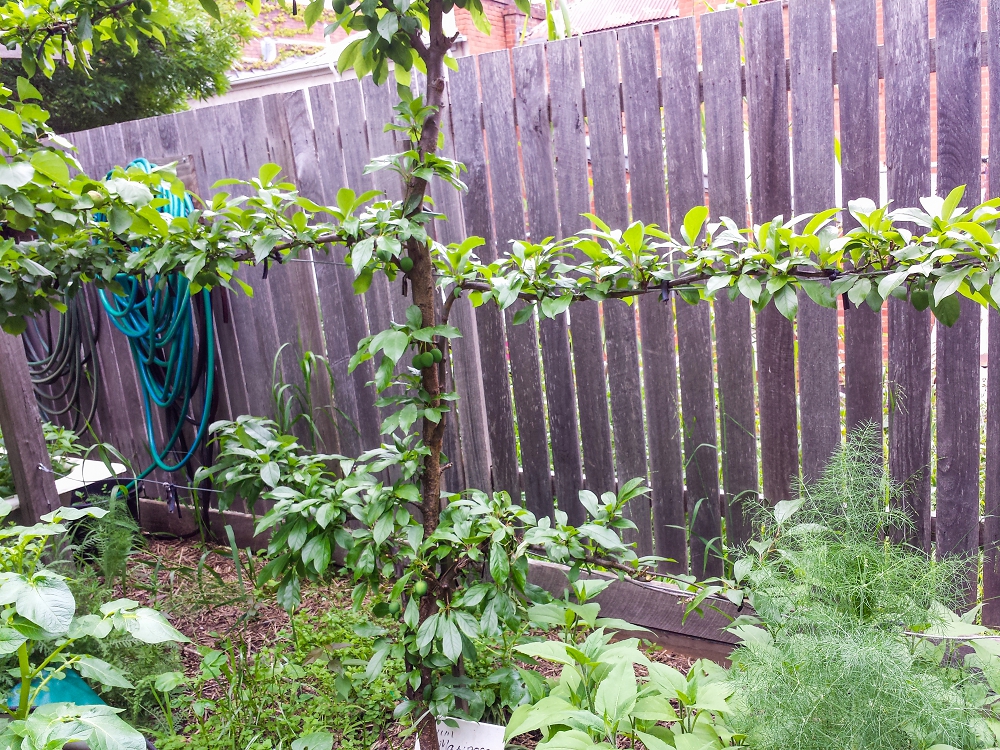
The Hub Plot garden has been going for more than 10 years. It started within the Mount Alexander Sustainability Group and is now part of a local relocalisation project called Growing Abundance.
We think they’re fantastic! They have a Monday morning gardening group that starts at 9am (and they always stop for a cuppa at 11!).
You can join in and get some practical skills, and they run all sorts of interesting workshops and activities. Click here to find out more about them.
Related Articles
Do your fruit trees have the right pollination partners?
Estimated reading time: 6 minutes Pollination partners for fruit trees are one of those things that most gardeners have heard of, but few really…
Will subtropical fruit trees work in your garden?
A lot of subtropical fruit comes from indigenous forest cultures, but that doesn’t mean you can’t grow it in your backyard.
Animals, fruit trees, and electric fences
Animals and fruit trees go well together if you can figure out how to enjoy the benefits without the animals doing too much damage.

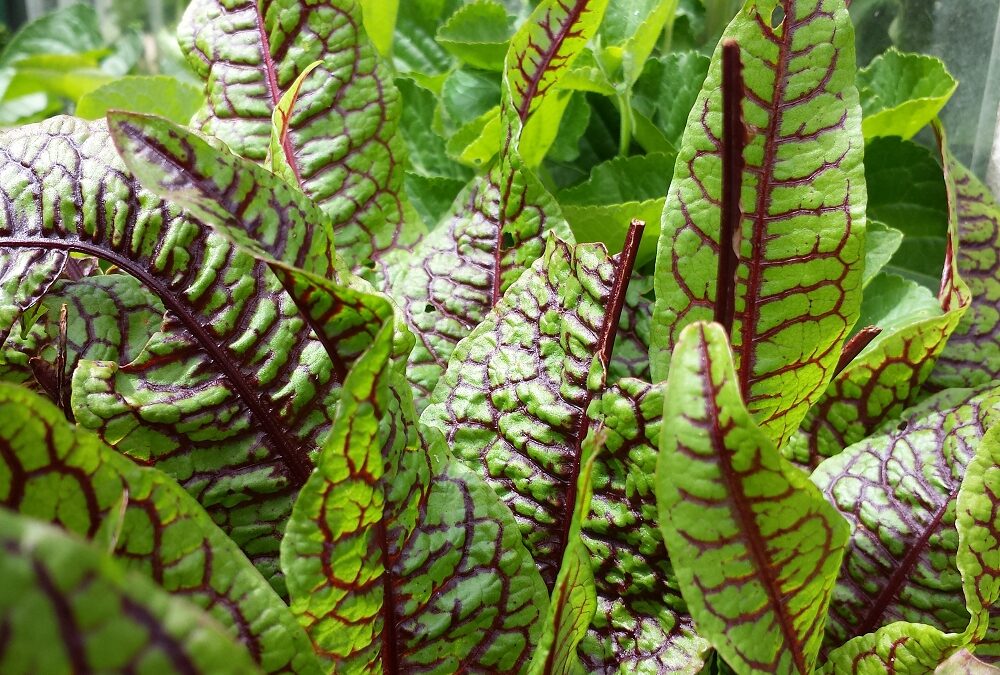


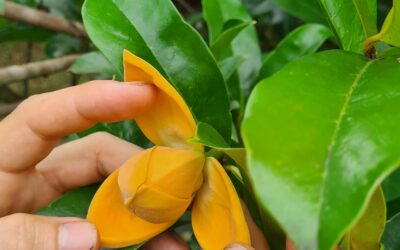
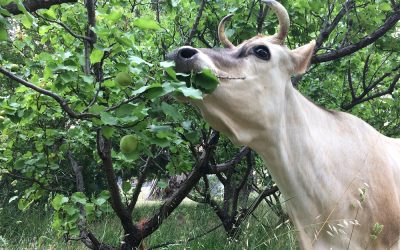


A site map would be helpful to see how they have arranged everything in their space.
You’re right, that would be great! We had hunt around the hub webpages for a visual like that from this garden but no luck. You might just have to visit in person if you’re ever in Central Victoria 🙂 Meg – GGF team.
Great sharing of detailed information on vegetable growing. Keep up the free sharing. Thank you